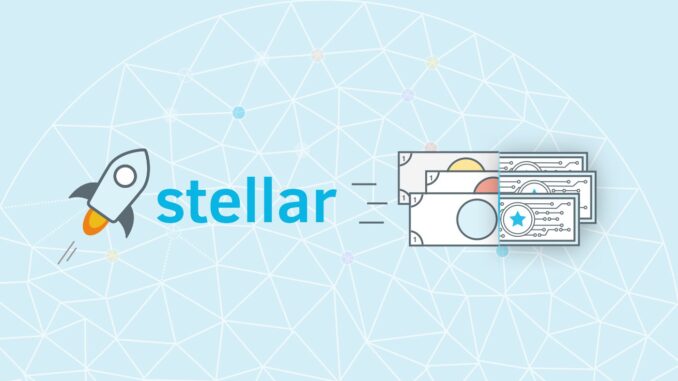
The main goal of Stellar (XLM) is to create an ecosystem for fast and convenient transfers with low fees between users. Stellar’s low commissions make it suitable for micropayments as well.
Content:
Performance and scalability
Depending on hardware and network configuration the performance is around 1000 transactions per second. Transaction validation time is 3 to 5 seconds.
Built-in mechanisms and features of Stellar
In Stellar, special network members, gateways (more details in the Architecture section), can issue their own assets tied to any assets in the real world. The assets are distributed in the form of credits, which the gateway agrees to redeem if necessary. Thus, in the XLM protocol, a token tied to, for example, USD can be issued and participants can transfer it freely to each other with minimal fees, regardless of their location.
In addition to assets tied to real-world assets, common custom assets can be created on the Stellar network.
To have its own liquidity between the issued assets in XLM created a decentralized exchange StellarX, which is convenient for currencies that do not have their own direct market.
The network’s registry holds bids to sell or buy assets within the network. An order is a public commitment to exchange one credit for another at a set price. The order book for each asset/gateway issuer is formed from the orders. Any user can create a new order, execute an existing order or cancel his own order added earlier.
To facilitate asset transfers between users, Stellar has implemented multi-currency transactions that can automatically convert assets between themselves at the most favorable exchange rate at the time. Thus, a user can send a transaction in an asset of his convenience, and the other side will receive the currency of his convenience. In the process of performing a transaction, an entire series of exchanges of one currency for another can take place.

Thanks to the ability to issue its own tokens and the presence of its own built-in exchange, Stellar can be used as a tool for ICO/STO. In addition to the basic features, it is possible to take advantage of additional features: for example, to limit the range of nodes that can participate in the confirmation of transactions associated with the issued token.
The platform supports different types of multi-signatures, which can be used to implement different types of accounts, e.g. one account that can be used by multiple users. See documentation for details.
A special Federation protocol allows you to link user accounts (a string of characters) with convenient account addresses that can, for example, have a look similar to an email.
The Stellar protocol supports the creation and execution of simple, incomplete smart contracts and decentralized applications.
XLM continues to support the Stellar Community Fund program, which annually distributes 12’000’000 XLM to community members who have created projects to grow the ecosystem. The selection is made by quarterly voting and XLM tokens are distributed among the winners. It is worth noting that in this way, the program encourages projects that already have a working component, rather than being solely at the concept stage. Thus, it should be perceived as a program for encouraging users and distributing tokens, rather than as a funding tool within the Stellar ecosystem.
Underlying Software – Stellar wallet
The Stellar core network was launched in 2014. The source code is available on github.
The following are among the many wallets to store XLM:
- The official lightweight online wallet Account Viewer with minimal functionality.
- Online wallets from third-party developers: Stellar Wallet, Lobstr, Blockchain Info, BlockEQ, etc.
- InterStellar wallets for all types of devices.
- Desktop wallets from third-party developers: Foxlet, BlockEQ, etc.
- Hardware wallets: Ledger Nano S.
Developers can take advantage of detailed documentation, dedicated SDKs to simplify the development process, and APIs for integration. Including libraries supported by the XLM team are available for languages: JavaScript, Java, Go, and community supported for languages: Ruby, Python, C# .NET Core 2.0, C#, C++.
Integration capabilities
The primary integration tool with Stellar is the Horizon API.
Integration with large organizations and financial service providers is one of the main directions of Stellar. From a technical point of view, the open source code allows you to create your own clients and plugins based on XLM to integrate with the platform. The official site has all the necessary tools, documentation and detailed manuals for this. Stellar is integrated with companies such as Deloitte, Tempo, and others.
